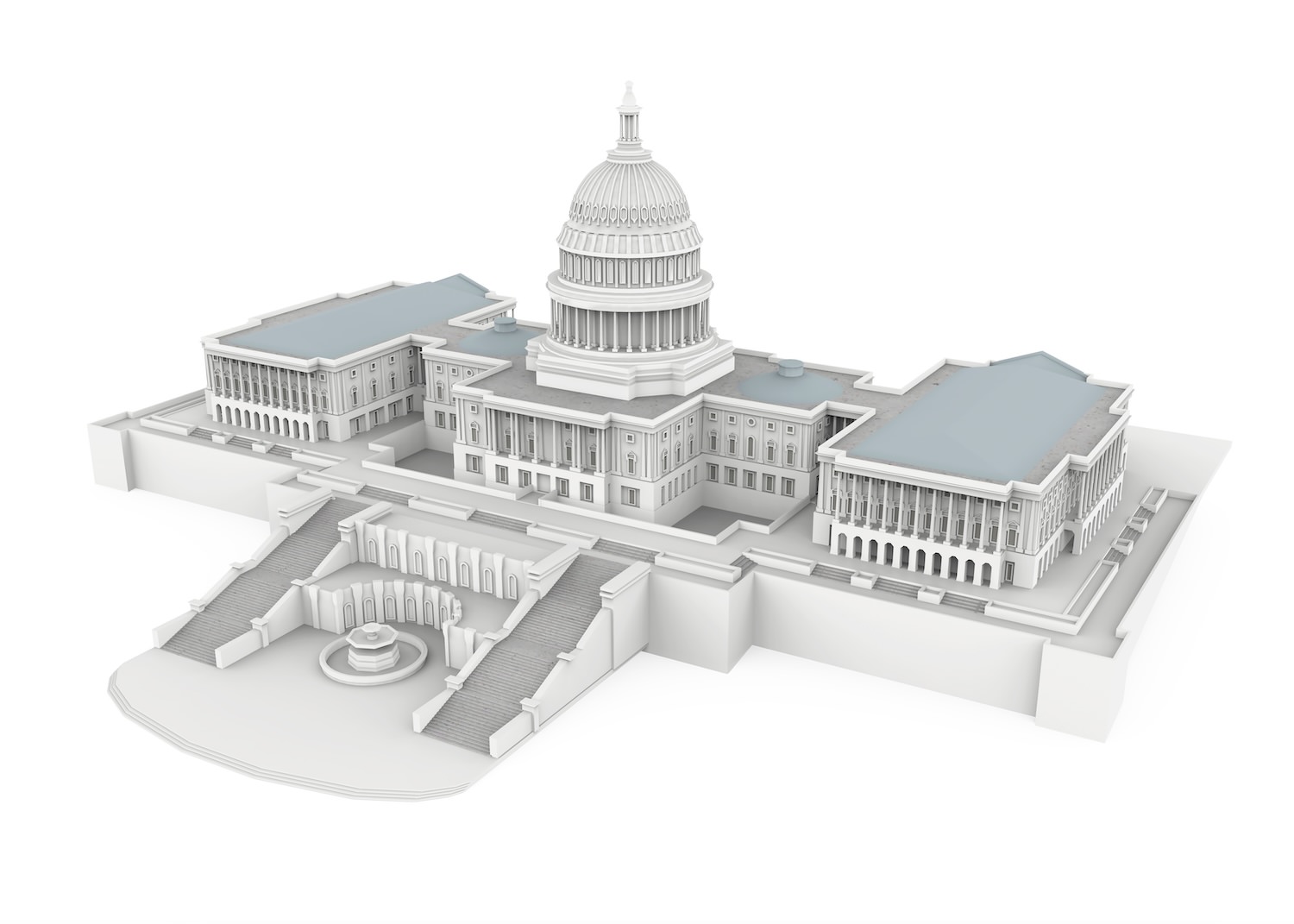Donald Trump’s plans for overturning the election result if he loses again have become increasingly visible. This year, Team Trump’s attack on our election system encompasses three distinct phases.
In Phase One, state and local officials loyal to Trump—aided and abetted by outside pressure groups and lawyers—erect obstacles designed to suppress votes for Harris, Walz, and Democratic candidates up and down the ballot. The Brennan Center has documented the systemic enactment of laws designed to make it harder for eligible Americans to register, stay on the voter rolls, or vote. These Republican schemes were enabled by the Supreme Court’s shameful decision in Shelby County v. Holder, in which the conservative majority voted 5-4 to narrow the Voting Rights Act.
That opinion, written in 2013 by Chief Justice Roberts (a Republican appointee and life-long crusader against voting rights), led 29 states, including the entirety of the former Confederate States other than Virginia, to enact at least 94 voter suppression laws over the following decade. Those laws recurrently limit absentee voting, permit partisan interference in elections, and threaten the people and processes that make elections work.
Trump’s Phase One strategy now includes massive purges of the voter rolls in key states like Georgia, Michigan, and Wisconsin. It also extends to Republican strongholds such as Florida, which has removed at least one million registered voters since 2022, of whom 90% are reported to be Democrats or unaffiliated; and in Texas as well, where Governor Greg Abbott has trumpeted that state’s removal of another million registered voters—all in the name of election integrity.
Phase Two involves multiple initiatives. First, Trump and his team are sowing fear, uncertainty and doubt about the validity of the elections, with the goal of weakening public confidence in the process and the results, and laying the groundwork for challenges to election outcomes in key jurisdictions that the Trump/Vance ticket actually loses.
Trump supporters have already promised they will challenge electoral count certifications in any swing state in which election officials have found that Trump lost. They are enacting laws that have the goal of enabling them to shut down vote counting and vote certification, such as the new Georgia law that gives power to a new MAGA-controlled Georgia election board to delay and potentially prevent certifications that are adverse to Trump.
There is also the risk of direct action by Trump supporters seeking to physically block electors in states narrowly won by Harris from meeting in compliance with state law to cast, sign, seal up and certify their electoral votes on December 17. Such illegal and potentially violent interventions would be aimed at preventing the state from submitting its electoral votes in the time and manner required by the ECRA.
In a recently released report, the Center for Media and Democracy (CMD) identified 239 election deniers in eight swing states (Arizona, Georgia, Nevada, New Mexico, North Carolina, Pennsylvania, and Wisconsin). 50 are Republicans running for the House or Senate, 6 are Republicans running for state executive office, 102 are sitting state and county election officials, and 81 are leaders of state and county Republican organizations.
While the strategic positioning and overtly anti-democratic views of some of these individuals have gained serious mainstream attention in major media such as The New York Times and The Washington Post, the same level of focus has not been afforded Phase Three, the MAGA team’s post-election endgame.
Phase Three would be activated should the Harris/Walz electors certified by the states constitute a majority of votes in the Electoral College. Phase Three has three minimum prerequisites. First, MAGA forces must achieve control over at least one house of Congress – and preferably both. Second, they must be united in their determination to overturn the election by decertifying the electoral votes for Harris/Walz in one or more states in which the state executives have certified the Democratic ticket has won. Third, the MAGA-leaning majority of the Supreme Court would have to find that Congress has the power to throw out electoral votes that the Congressional majority doesn’t like.
Let’s look concretely how Team Trump would get there.
Using Control of Congress to Control the Presidential Result
The easiest pathway for the MAGA forces to overturn a Harris victory would be for Republican members of Congress to secure a majority in both houses in the November elections, and then award the presidency to Donald Trump in the upcoming Joint Session of Congress on January 6, 2025.
Following the requirements of the Electoral Count Reform Act (ECRA), the bi-partisan bill enacted in 2022 in response to pervasive election denialism in 2020 and Trump’s orchestration of the January 6 insurrection, at least 20 Senators and 87 Members of the House would first need to notify the Joint Session that they object to the counting of electoral votes in just enough states won by Harris to leave Trump with a majority of the remaining electoral votes.
The objections would presumably cover both of the grounds for rejection as authorized under the ECRA: Republicans would argue that electoral votes were not lawfully certified in the given state or states under the laws of those state(s), and they would contend that votes were not “regularly given,” on the basis of unproven claims of mass voting fraud or other asserted election failures.
Under the ECRA (as with its 1887 predecessor, the Electoral Count Act [ECA]), the two houses of Congress would then meet separately and vote on whether to accept or reject the certification in those selected states. The risk for Trump is that some Republican members would be unwilling to go along with this strategy. But in practice, that risk is primarily in the Senate, as he has effectively purged non-MAGA Republicans in the House.
If Trump can get a MAGA majority in both houses, that partisan majority could reject certifications of just enough states to take away a Harris win in the Electoral College, thereby granting Trump an outright majority of the remaining votes that were certified. Once Trump’s Congressional supporters threw out the electoral votes of the disputed states, Trump would become President.
Any such decision would then immediately be challenged in the Supreme Court.
Tyranny of the Majority
Such an abuse by a MAGA majority control of the House and Senate, and its ratification, would fly in the face of constitutional history. Since the founding of the country, voting for president has always been seen to be a power granted by the Constitution to the states, with state legislatures establishing the rules for determining who has won the electoral votes in the respective states. Indeed, the provision in the Constitution that established the Electoral College, the Presidential Electors Clause, reads, “Each State shall appoint, in such Manner as the Legislature thereof may direct, a Number of Electors.” How we count votes for President is a matter in the first instance covered by state law, subject to judicial review, as reflected in Alexander Hamilton’s Federalist Paper No. 78, and not a decision by federal legislators.
Consistent with that framework, Team Harris would argue that neither the 12th Amendment nor the ECRA allow partisan majorities of Congress to toss out state-certified results of a state’s electoral vote unless they have been first invalidated by the courts. Congress has no constitutional authority to substitute its own judgment to reinterpret state election law. All that the ECRA permits is for Congress to have the right to deal with the unlikely scenario in which a rogue state executive has denied the results of the popular vote, by certifying electors for the losing candidate – or has failed to certify the correct electors based on the popular vote.
Team Harris would state that as a matter of due process and equal protection of the vote, members of Congress do not have the right to disenfranchise a state (or Congressional district) on the basis of claims of “fraud.” The case for Harris might even cite language from the Supreme Court’s 2000 decision in Bush v. Gore holding that once a person has been granted the right to vote, it is unlawful to “by later arbitrary and disparate treatment, value one person’s vote over that of another.”
Team Trump would argue that the Constitution and the ECRA do grant the Congress the right to reject any electoral votes they choose. They’d likely cite the language of the 12th Amendment that the President of the Senate “shall, in the presence of the Senate and House of Representatives, open all the certificates and the votes shall then be counted.” They could argue that this language is meant to enable them either to assent to those certificates, or to object and seek to invalidate particular certificates of electoral votes.
They could further state that consistent with their interpretation, the ECRA, like the ECA before it, specifically provides a mechanism to make such objections and have them heard. Should a majority of both bodies object to the acceptance of the electoral votes of a particular state, their objections must be sustained, and the votes deducted from the total required for a majority, reducing the number needed for Trump to declare victory based on the total number of electoral votes that remain, in accord with the electoral vote counting procedures set forth in the ECRA.
In this scenario, it would not be unimaginable for the six Republican justices of the Supreme Court who voted to grant Trump “absolute” immunity from criminal prosecution for “official acts” within his “core constitutional powers,” including crimes involving his direction to officials at the Justice Department, to find a similarly breathtaking authority in the 12th Amendment and ECRA. This wing of the Court could find that a MAGA majority of both chambers of Congress does have the authority to make the final determination of whether particular electoral votes are “regularly certified” or “regularly given,” whatever state officials, state courts, or even federal courts have determined.
Thus, a Harris electoral vote majority could be overridden by a Republican congressional majority in both houses, backed by a MAGA-leaning Supreme Court majority deploying raw political power in a legislative and judicial coup to return an unpopular and, in fact, unelected Trump back in the White House. There he could become, as he has promised, a dictator on “day one.” The despotic end would be achieved through despotic means.
Tyranny of the Minority
Given the risks for democracy of this kind of outcome, some might hope that it would be enough for the Democrats to win a single chamber of Congress – in 2024, this would most likely be the House of Representatives – to prevent MAGA Republicans backed by the Supreme Court from simply handing the Presidency to Trump counter to the expressed will of the American public.
The ECRA expressly says that the electoral votes of a jurisdiction may only be rejected if both chambers of Congress have rejected them. Surely this language expressly protects the country from the risk that an out-of-control majority of a single chamber of Congress might try to overturn a Presidential election by simply refusing to accept the results of one or more states.
Here, Trump partisans might still try an end-run around the ECRA rule designed to prevent a party holding a majority in just one house from kidnapping a Presidential election. Their argument: no one elected to either the Senate or the House is a potted plant. Each body has the right to determine whether to accept an electoral count certificate. The ECRA is therefore unconstitutional in purporting to limit the right of members of either the House or the Senate to pick and choose what electoral votes they will deem to be valid.
Unfortunately, there is precedent for invalidating electoral counts of states on the basis of decisions of just one chamber going back to 1865. In the wake of the Civil War, Congress enacted the “Twenty-Second Joint Rule,” which created a one-house veto that authorized the House of Representatives to reject electoral votes from former Confederate states. The House then used this authority to unilaterally reject electoral votes in some Confederate states in the Presidential elections of 1865, 1869, and 1873. Accordingly, Team Trump would contend that a majority of the votes of either house is sufficient to throw out electoral votes and to subtract them from the total required for a majority.
In response, the Harris team would likely argue that the Joint Rule was probably unconstitutional. More importantly, whatever authority the post-Civil War Congress may have had to enable one body of Congress to throw out those votes in the aftermath of the Civil War, the current Congress has no such authority now, given the Equal Protection rights guaranteed by the 14th Amendment and the enactment of the ECA in 1887 and the ECRA in 2022. Each of these legislative acts expressly states that electoral votes may only be rejected by a concurrent decision of the majority of both houses.
It is hard to imagine that even this Supreme Court would rule it lawful for Trump partisans in a divided Congress to reject electoral votes that have been deemed proper by the state’s own legal processes. Furthermore, the Court could be confronted by Democrats in the other chamber engaging in tit-for-tat to invalidate Trump electoral votes, leading to chaos.
The Court, however, would have still another dangerous option to consider.
The Dangerous Solomonic Alternative – Moving to a Contingent Election
The Supreme Court’s MAGA-leaning members could choose an option that appears neutral and fair, but would guarantee that Trump wins. That option would be to find that in cases where the two Houses do not agree on upholding the electoral count certifications in a given state, those votes would not be counted, but also would not be deducted from the total.
To justify this outcome, the Supreme Court might build on the equal protection language from Bush v. Gore, finding that to disenfranchise the voters in some states but not others would violate the principle of equal protection, and would in turn invite the two chambers of Congress to engage in dueling disqualifications whenever they were controlled by different parties.
Perhaps citing Justice Jackson’s famous statement that the Constitution is not a suicide pact, the MAGA-leaning members of the Court could rule that the portion of the ECRA which mandates that invalidated electoral votes be deducted from the total required for a majority is itself unconstitutional and inconsistent with the 12th Amendment, which requires “a majority of the whole number of Electors appointed” for a candidate to be elected. As neither candidate would then have enough electoral votes to elect a President, the decision would move to a contingent election in the House of Representatives, where a state-by-state vote of the congressional delegations would determine the result.
As I have previously described in detail, such a procedure would almost surely result in the selection of Trump as President. It is almost impossible for Democrats, even if they were to win control of the House of Representatives, to win a majority of the individual state delegations. Given rampant gerrymandering, in 2025, Republicans are likely to retain control of the majorities in at least 26 of the 50 states.
At that point, a House controlled by a Democratic majority might well have tools to stop, or at least stall, an illegitimate contingent election, and thereby place the Speaker of the House in the White House under the terms of the Presidential Succession Act. But any President (or acting President) entering office as a result of a cooked-up contingent election or by tactics employed to counter one would face a crisis of legitimacy from the outset, amid grave risk of widespread civil unrest.
A Scenario To Save the Republic
All of these nightmare outcomes remain avoidable. Should Harris win, and Trump try to overthrow the election through such legal stratagems, the ultimate safety valve will be for enough congressional Republicans of conscience to opt against disenfranchising the electoral votes of any state.
In a seemingly encouraging development last Thursday, September 12, six Republican members of Congress joined a unity pledge, committing to acknowledge whoever is certified at the joint meeting of Congress in January 2025 as the winner of the election. While a step in the right direction, the pledge does not address the possibility that majorities in either the House or Senate may attempt to overturn a legal certification made at the state level.
To vote against such an attempted coup in a situation in which Republicans controlled both houses would take political courage. But in practice, a few Senate Republicans choosing to uphold the certification of every state whose votes have been certified by its executive and not invalidated by the federal judiciary prior to January 6, 2025 would likely be sufficient to prevent the Senate from taking state-certified electoral votes away from anyone.
Senate Republicans matter most because the Senate is the chamber most likely to be controlled by Republicans in 2025. In 2022, Susan Collins (R-ME), was the principal Senate sponsor of the ECRA. She described its purpose as ensuring that the electoral votes tallied by Congress accurately reflect each state’s vote for President, and recruited other Senate Republicans to join her. Some of those Senators, such as Mitt Romney (R-UT), will have departed by January 6, 2025. But Lisa Murkowski (R-AK), Shelley Moore Capito (R-WV), Todd Young (R-IN), and Lindsey Graham (R-SC), all of whom cosponsored the law, would still be in office.
If this group of Republicans were to join their Democratic colleagues to uphold all of the electoral votes submitted to the Senate by the executives of the various states and the District of Columbia, on January 6, then the Joint Session should be able to elect a President and avoid a major Constitutional crisis without any intervention by the Supreme Court.
Other Republican Senators might even support them to protect their wider institutional interests.
Outgoing Republican leader Mitch McConnell (R-KY) has spent decades building a Supreme Court with his personal stamp on it, and might want to protect the Supreme Court from itself, seeking to arrest the Court’s already collapsing legitimacy. There is no love lost between him and Trump. After the January 6 insurrection, McConnell made clear that he blamed Trump for inciting the insurrection, privately referring to him as a “son-of-a-bitch” who deserved impeachment.
McConnell could decide it is in his interests to join Collins, Murkowski, and a handful of additional Republican Senators to keep Trump from illegitimately entering office with the help of the conservative majority on the Supreme Court.
While a rump partisan Republican House could still ask the court to invalidate electoral votes by finding the ECRA’s bicameral requirement unconstitutional, a strong stance by enough Senate Republicans to certify all of the electoral votes in the Senate would provide the Court breathing room to steer the country — and the Court itself — away from the maelstrom and toward the process of healing American democracy in the post-Trump era.
Jonathan M. Winer is a former U.S. Deputy Assistant Secretary of State for International Law Enforcement.







0 Comments